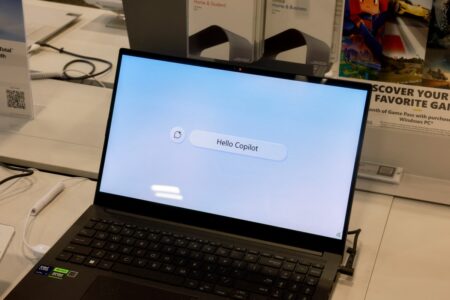
Have you recently started college or university? You might find yourself in a position where you may need to email your lecturer or professor. The kicker? You’ve never actually been taught how to write emails to professors or how to write one in a professional context.
Do a quick Google search on “emailing professors” and you’ll likely find a flurry of gripes from professors and academics about poorly written student emails.
While email may be a standard mode of communication between students and their professors outside the classroom, it’s important to remember that emailing a professor is unlike texting — it’s much more formal. You do not want to pepper your email with emojis, slangs or acronyms.
So how do you write one without drawing the wrath of your professor? And why does it even matter?

Before you hit the “send” icon, you might want to proofread your email for grammar, punctuation and typos. Source: Cindy Ord/Getty Images/AFP
How to email your professor without annoying them
Emailing etiquette is an important skill in the real world, so it’s best to familiarise yourself with it while you’re still a student.
An email represents yourself. Write an unprofessional email, and you’ll come across as an unprofessional person. It’s as simple as that.
Poor email etiquette could also mean that your email could end up being unread.
Here’s a quick guide to help you nail the basics of how to write emails to professors:
Have a clear subject line
A subject line can affect whether or not an email will be read.
This quote by Dr. M.J. Toswell, a professor in the Department of English at Western University, aptly summarises why having a clear subject line (and a professional email address!) is important:
“My all-time favourite was a sequence from last year, on a Friday evening. The first email at 8 p.m. asked me whether an assignment was really due online on Monday night.
“The second email at 9 p.m. asked why I hadn’t answered the first email yet. Both were addressed ‘Hey’ and sent from a private email address that landed in my spam so I didn’t see them until Saturday morning, and nearly deleted them because the subject line was blank too.”
Salutation
First impressions count. How you greet others affects other people’s impressions of you, and the same can be said about email salutations.
Using salutations such as “Dear” or “Hello” followed by the academic’s name and/or title (eg. Dr. AAA) can be a good way to start an email and conveys respect. You can crosscheck their names in the class syllabus.
Take it from Dr. Manina Jones of the English and Writing Studies Department at Western University.
She was quoted saying by Scribendi, “I have to say that the lack of any salutation (launching right into ‘I want . . .’ or ‘Where is …’ or ‘Can I …’) … is the quickest way to get my back up before I even read the body of the message.”
Introduce yourself
How well do you know your professor? If the answer is “not well”, start your email by introducing yourself, including your name and course.
Your professor probably has many other students from different courses or classes emailing them throughout the week — a brief introduction of yourself can go a long way towards helping them place you and respond to your email with what you need.
Why are you emailing them?
Keep your email short, simple and to the point. Most importantly, state your question or request politely. If you have numerous requests or questions, list them out clearly so that your professor can read them easily.
You don’t want to send numerous emails about several issues when you can organise your questions or requests in one, organised email. Remember: not everyone has the time (or the patience) to go through long or unclear copies of emails.
The worse case scenario? Your email may go unread.
Signing off
Thank you is a safe sign off, but you can also consider others such as “Best”, “Best regards” or “Sincerely”, followed by a signature or your name.
Your email signature can include your full name, major and graduation year.

You can always get someone you trust to read your email before hitting the “send” button. Source: Wojtek Radwanski/AFP
Proofread your email
Their or they’re? You or you’re?
Typos and grammatical errors can happen for many reasons, including when we’re rushing for a deadline, when we’re writing in a second language, or merely out of carelessness.
So before you hit the “send” button, you might want to proofread your email for grammar, punctuation and typos, or get a trusted friend to go through your email to avoid embarrassing mistakes.
Alternatively, you can consider running your email through apps such as Grammarly, which can help improve your quality or clarity of writing.
And there you have it. We hope you’ll find these tips on how to write emails to professors helpful. For some, emailing an academic can be intimidating at first, but with a bit of practice, you’ll get the hang of it in no time!










